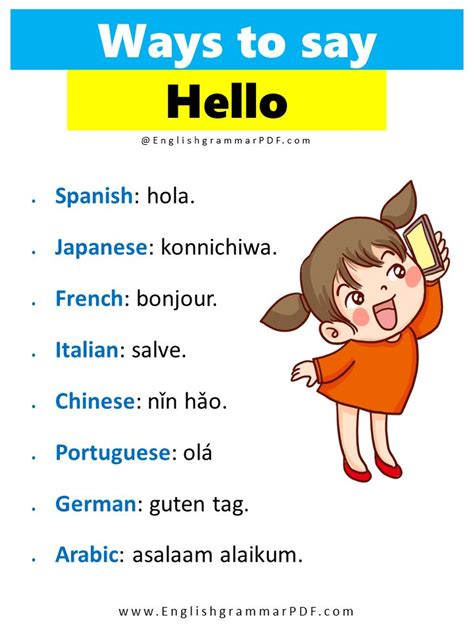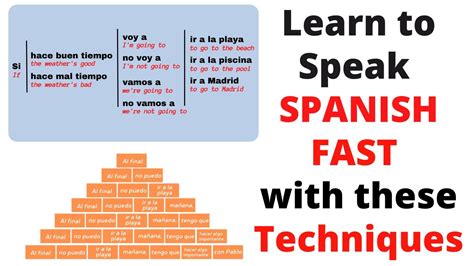Spanish, a Romance language with a rich history and diverse cultural heritage, is spoken by over 460 million native speakers worldwide, making it the second most widely spoken language in terms of native speakers after Mandarin Chinese. With its growing importance in global communication, business, and tourism, learning Spanish can open doors to new opportunities and enhance your understanding of the world. Whether you're a beginner or looking to improve your existing skills, here are five ways to try Spanish and make the most out of your learning journey.
Immerse Yourself in the Language

One of the most effective ways to learn any language, including Spanish, is through immersion. This involves surrounding yourself with the language as much as possible. You can start by listening to Spanish music, watching Spanish movies or TV shows with English subtitles, and trying to speak with native speakers. Immersion helps you get used to the sound, rhythm, and grammar of the language, making it easier to learn and remember. For instance, listening to podcasts like “Coffee Break Spanish” can provide you with a casual and engaging way to improve your listening skills and get familiar with different accents and speaking styles.
Use Language Learning Apps
Language learning apps have revolutionized the way we learn languages. Apps like Duolingo, Babbel, and Rosetta Stone offer comprehensive Spanish courses with interactive lessons, quizzes, and exercises. These apps are designed to be fun and engaging, making learning Spanish an enjoyable experience. They also allow you to learn at your own pace, which is particularly useful for those with busy schedules. For example, Duolingo’s gamification approach makes learning Spanish feel like a game, where you can earn points, badges, and compete with friends, which can be a great motivator.
| App | Features |
|---|---|
| Duolingo | Interactive lessons, gamification, free version available |
| Babbel | Comprehensive lessons, focus on conversational skills, subscription-based |
| Rosetta Stone | Well-structured lessons, speech recognition technology, subscription-based |

Take a Spanish Course

Enrolling in a Spanish course, either online or in-person, can provide a structured learning environment. Courses are typically designed to cover all aspects of the language, including grammar, vocabulary, reading, writing, and speaking. They also offer the opportunity to interact with a teacher and fellow students, which can be very motivating and help you stay on track. Look for courses that cater to your level, whether you’re a beginner, intermediate, or advanced learner, to ensure you’re challenged appropriately and can make the most out of the course.
Practice with a Language Exchange Partner
Finding a language exchange partner, either in person or online, can be a fantastic way to practice your Spanish speaking skills. You can exchange languages, where you teach your partner your native language, and they teach you Spanish. This method is not only effective but also free. Websites like italki and Conversation Exchange can help you find a partner. Remember, the key to success is to be consistent and to find a partner who is similarly motivated and committed to the exchange.
Key Points
- Immerse yourself in the language through music, movies, and speaking with native speakers.
- Utilize language learning apps like Duolingo, Babbel, and Rosetta Stone for interactive lessons.
- Consider enrolling in a Spanish course for a structured learning environment.
- Practice with a language exchange partner to improve speaking skills.
- Be consistent and patient with your learning process, as mastering a language takes time.
Learning Spanish is a rewarding journey that can enrich your personal and professional life. By immersing yourself in the language, using language learning apps, taking a Spanish course, practicing with a language exchange partner, and staying consistent, you can become proficient in Spanish and open yourself up to a world of new possibilities.
How long does it take to become fluent in Spanish?
+The time it takes to become fluent in Spanish depends on several factors, including the amount of time devoted to learning, the learning method, and individual language learning ability. With consistent effort, it’s possible to reach a high level of proficiency in a year or two, but becoming fully fluent can take longer, typically 5-10 years.
What is the best way to learn Spanish vocabulary?
+The best way to learn Spanish vocabulary is through a combination of methods, including flashcards, reading Spanish texts, watching Spanish movies and TV shows, and practicing conversations with native speakers. Using apps like Quizlet and Anki can also be very effective for memorizing new words.
Is it necessary to learn Spanish grammar rules to speak fluently?
+Understanding Spanish grammar rules is crucial for speaking correctly and fluently. While it’s possible to communicate without knowing all the grammar rules, having a solid grasp of grammar helps you express yourself more clearly and accurately. It’s recommended to learn grammar rules in context, through practice and conversation, rather than just memorizing them.



